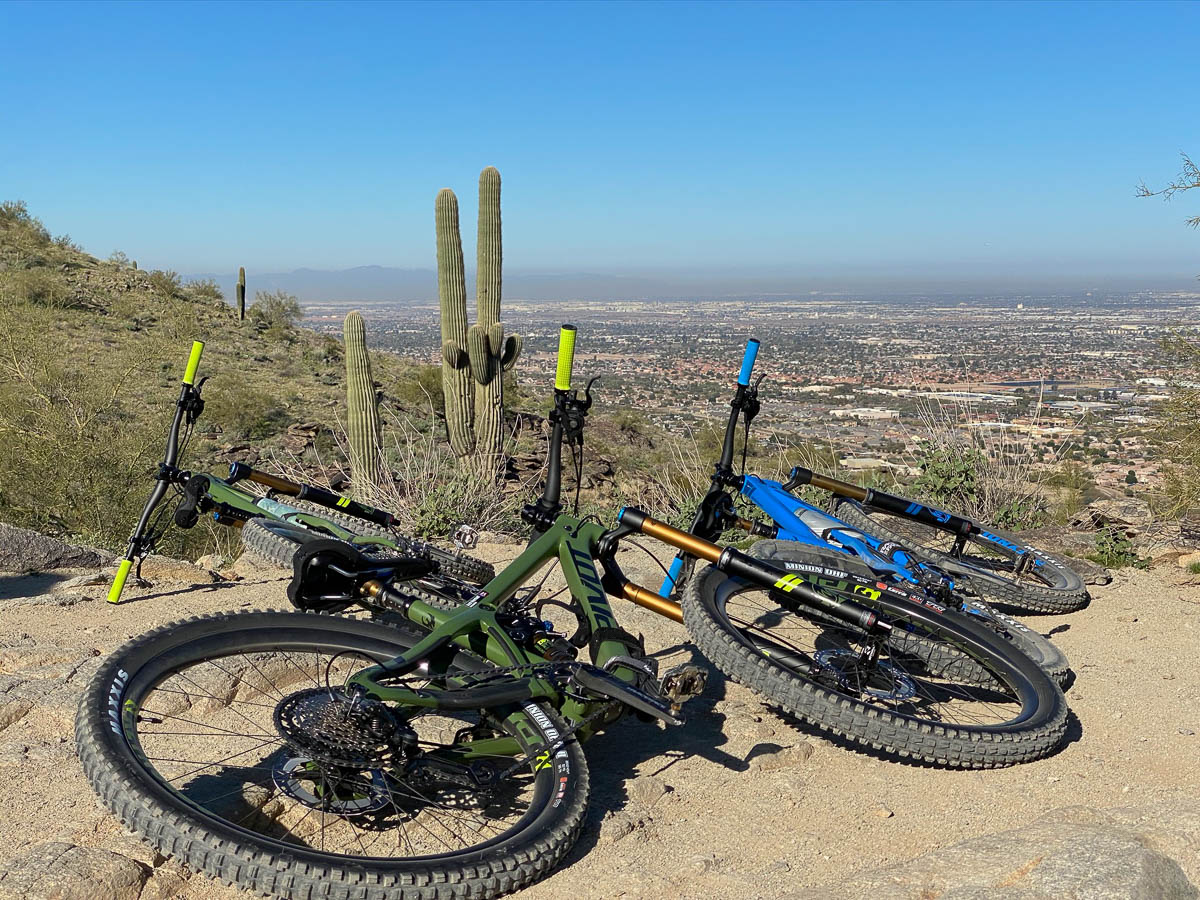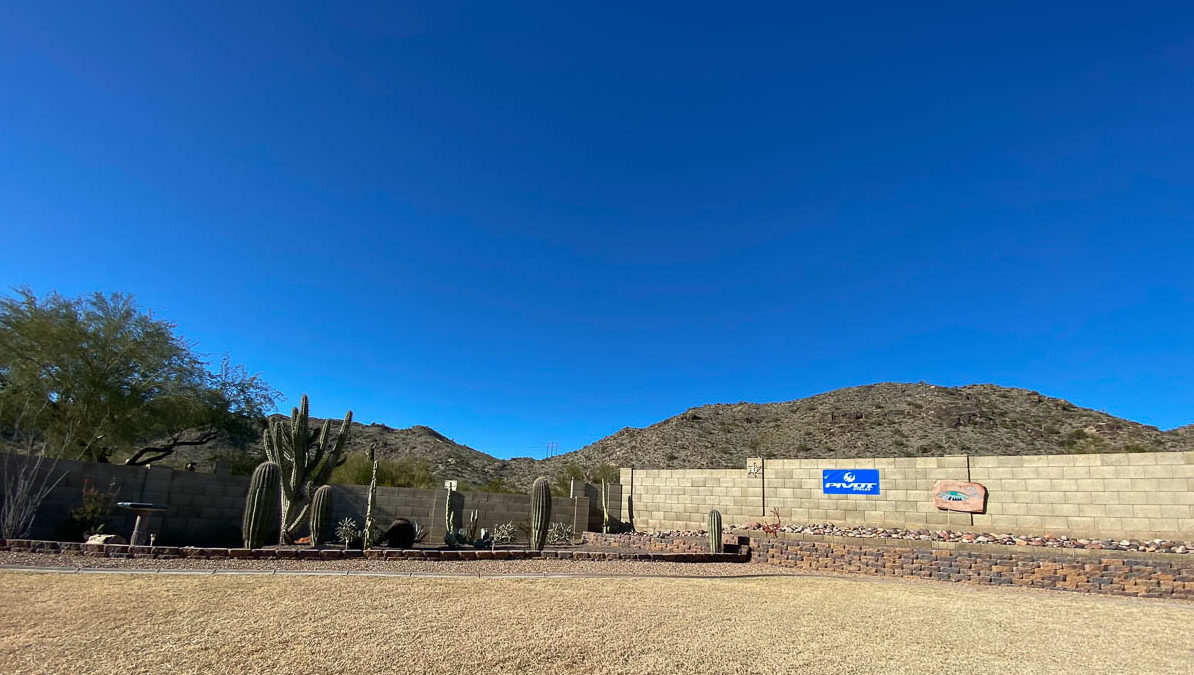In terms of proximity to world class trails, Pivot’s Tempe, AZ headquarters rank up there with the best. Hop in a car and you can find amazing rides in just about any direction, but better still – hop on your bike and you’re less than two miles from the South Mountain Trail System. For past Pivot launches we’ve been invited out to famous riding locations like Moab and Grand Junction, but this time, Pivot wanted us a little closer to home.
OK, really close to home. Keeping things family-style in Pivot tradition, we found ourselves in rental houses that you could literally ride straight out the side yard to the South Mountain trails. We were also just a very short drive from Pivot’s headquarters, and subsequently, the future home of Pivot Cycles as well.
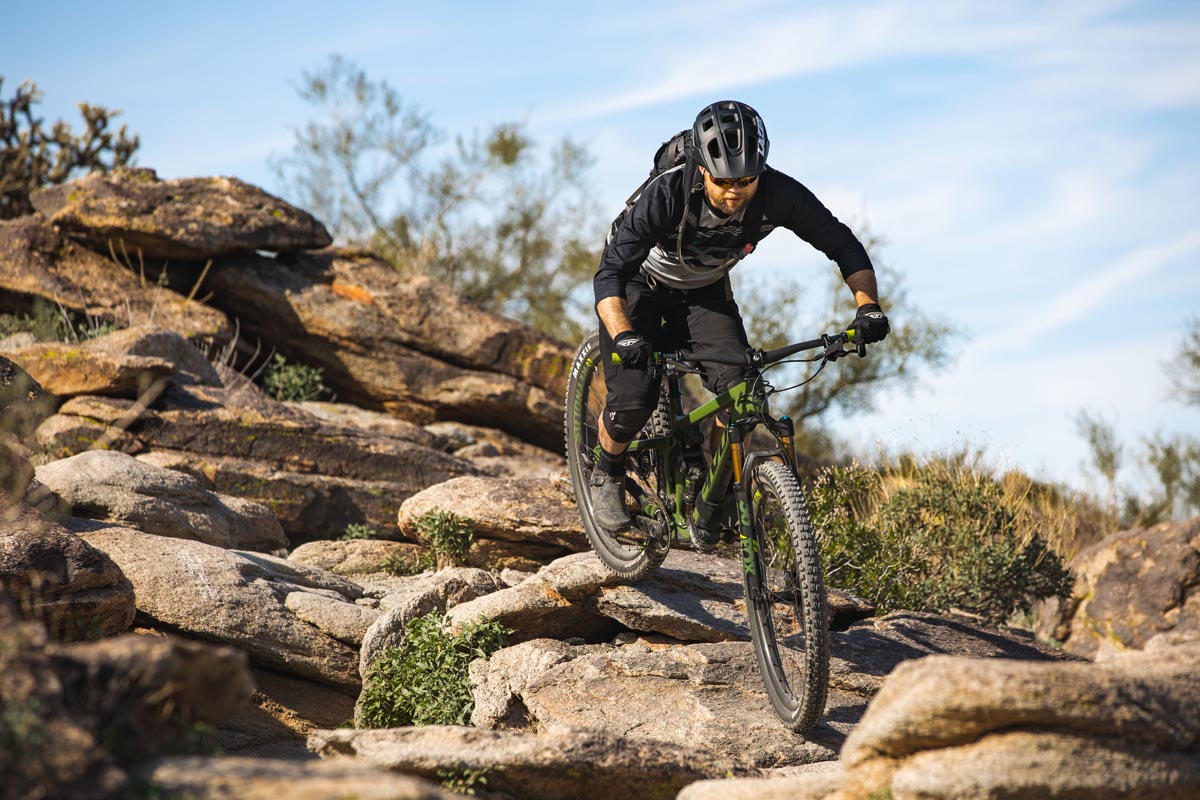
South Mountain Home
So why bring us out to Tempe for the launch of an important new model like the 2020 Switchblade? For starters, it’s warm enough here in January that for those of us that live in colder winter climates, it was a nice break from the weather. More importantly, the trails at South Mountain are no joke. These aren’t just a handful of artificial trails piped in out of necessity. Rather, the established network of trails here are a mix of everything from tame, rolling singletrack, to bike and body-punishing gardens of rock dotted with extremely technical features and lined with every sharp plant you could imagine. In short, it’s the perfect place to test a new full suspension all mountain bike, and it just happens to be in Pivot’s backyard.
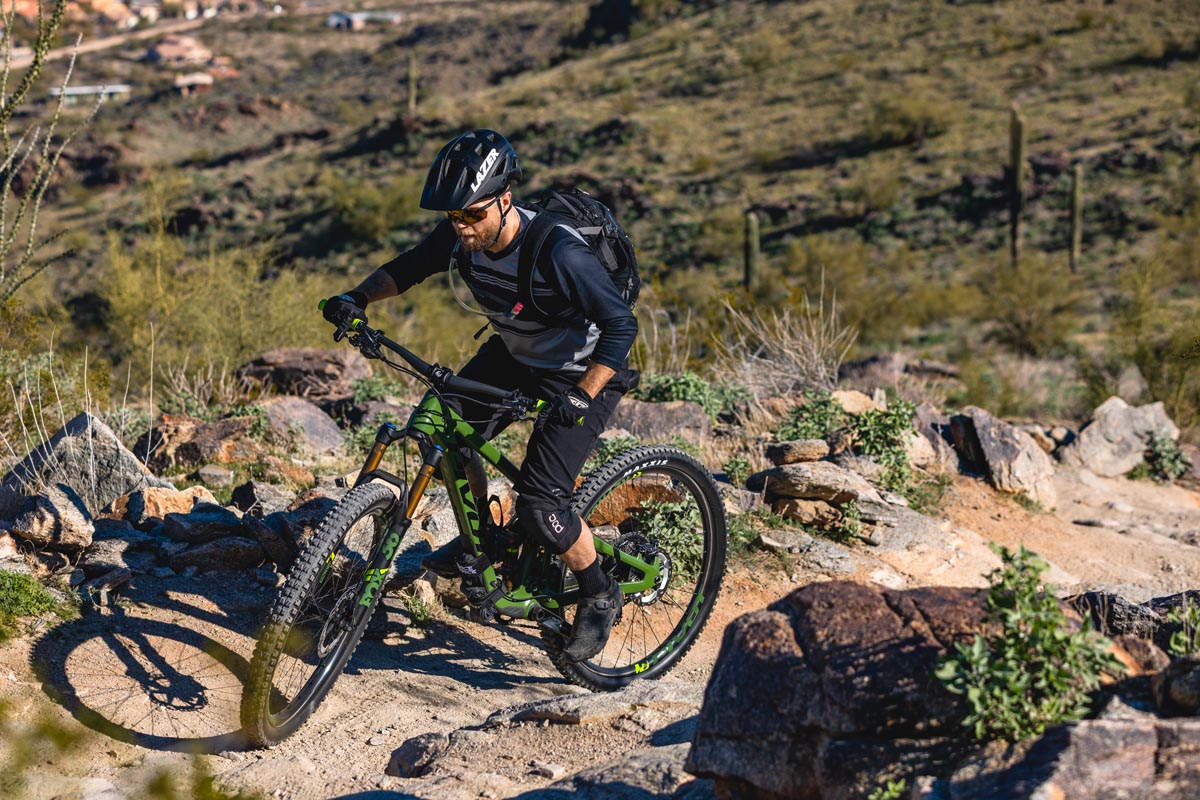
Riding Blind
In a move that’s becoming much more common (for good reason), our first ride on the new Switchblade took place well before we got the details on the bike. Sure, we knew that we would be riding a new Switchblade, and Fox helped us set up the suspension, but aside from what we could visually pick out from the new bikes, we were able to hit the trails without any preconceptions. And in typical all mountain bike fashion these days, we were greeted almost immediately with a long climb up to the National Trail saddle to make sure we really got a feeling for how well this thing pedals.
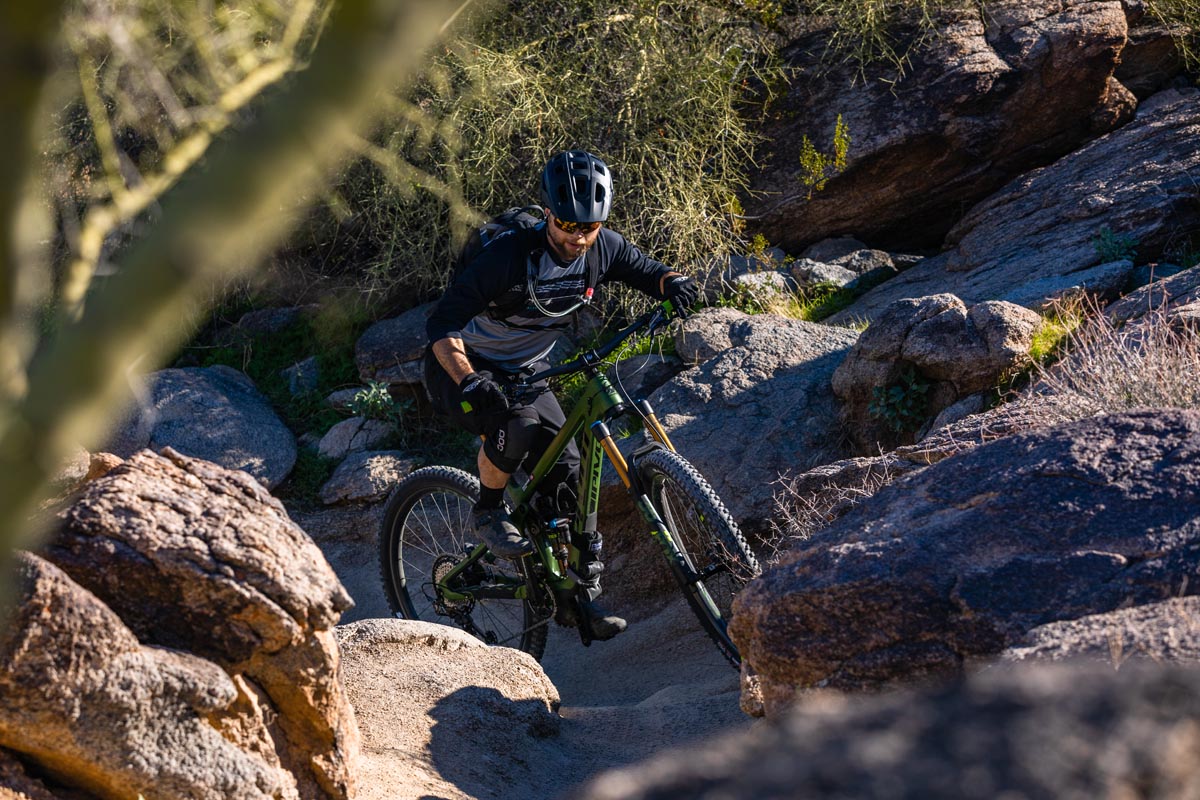
Not only is the climb fairly long, but it’s also quite technical in spots which I tend to really enjoy. I wasn’t the least bit surprised to find that the Switchblade climbs like the previous version – only better. Obviously a lot of those pedaling dynamics come from Dave Weagle’s magic touch with the dw-link suspension, but Pivot always manages to create bikes that pedal extremely well while maintaining the ability to soak up the brutal square edged hits of the desert.
The ability of the Switchblade to make traction appear seemingly out of nowhere was on full display as I clawed my way up some of the more technical sections. You can have you long, steady, and easy grinds – I’ll take climbs where clearing a section feels like a major accomplishment any day of the week. Even though the new Switchblade has gone with a longer reach and slacker head tube angle, the bike still felt completely manageable in tight sections of trail going both up and down.
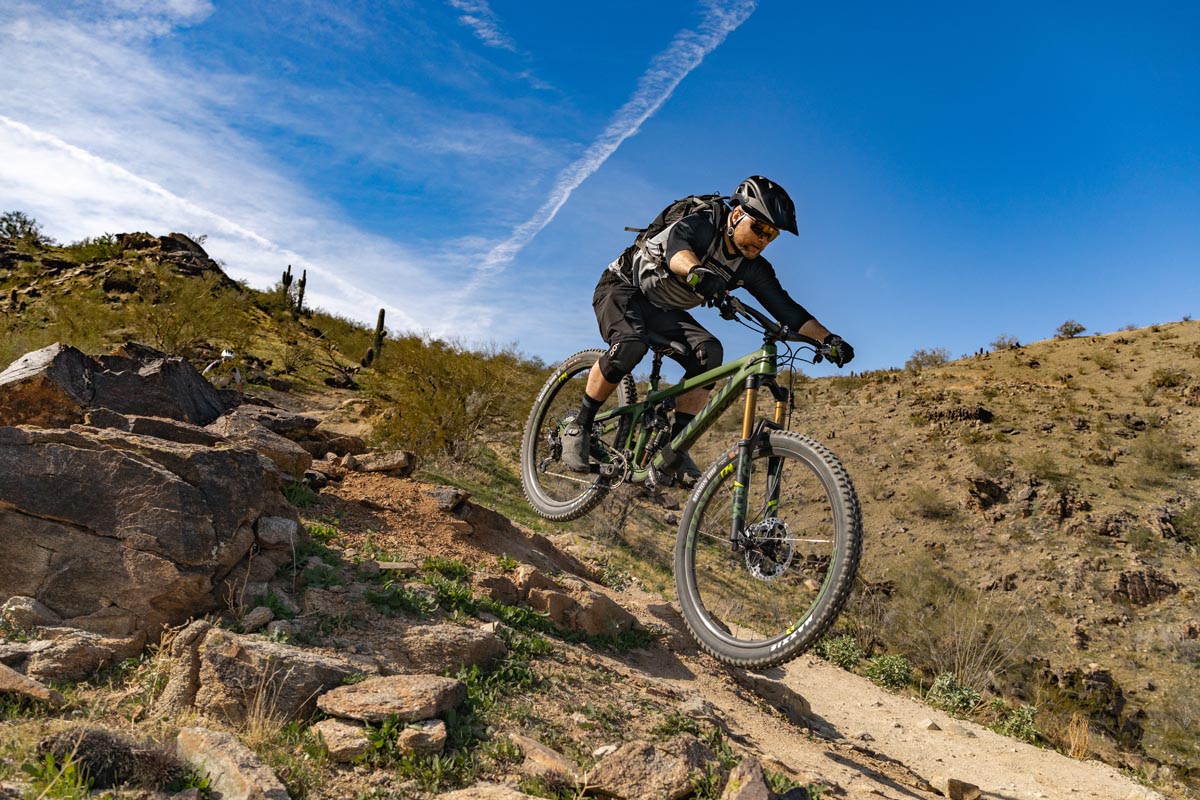
Even Better Pointed Down
And as good as the Switchblade is at going up, we all care more about going down, right? To that point, the Switchblade has grown in travel from 135mm to 142mm. I can’t say that you can necessarily feel that extra 7mm of travel, but I can say that as a whole, the new bike just feels more… capable. That word is certainly overused, but it sums up this new bike very well. Being early in the season coupled with a few personal factors which meant I couldn’t afford to be injured for the next month or so, I found myself riding more timidly than I typically would. On a trail network like South Mountain, that can spell disaster if you aren’t fully committed. Fortunately, the Switchblade was more than happy to bail me out when I went into a jump or a drop without conviction. But at the same time it seemed to reward you if you went full send. If that’s not the hallmark of a great all mountain bike, I don’t know what is.

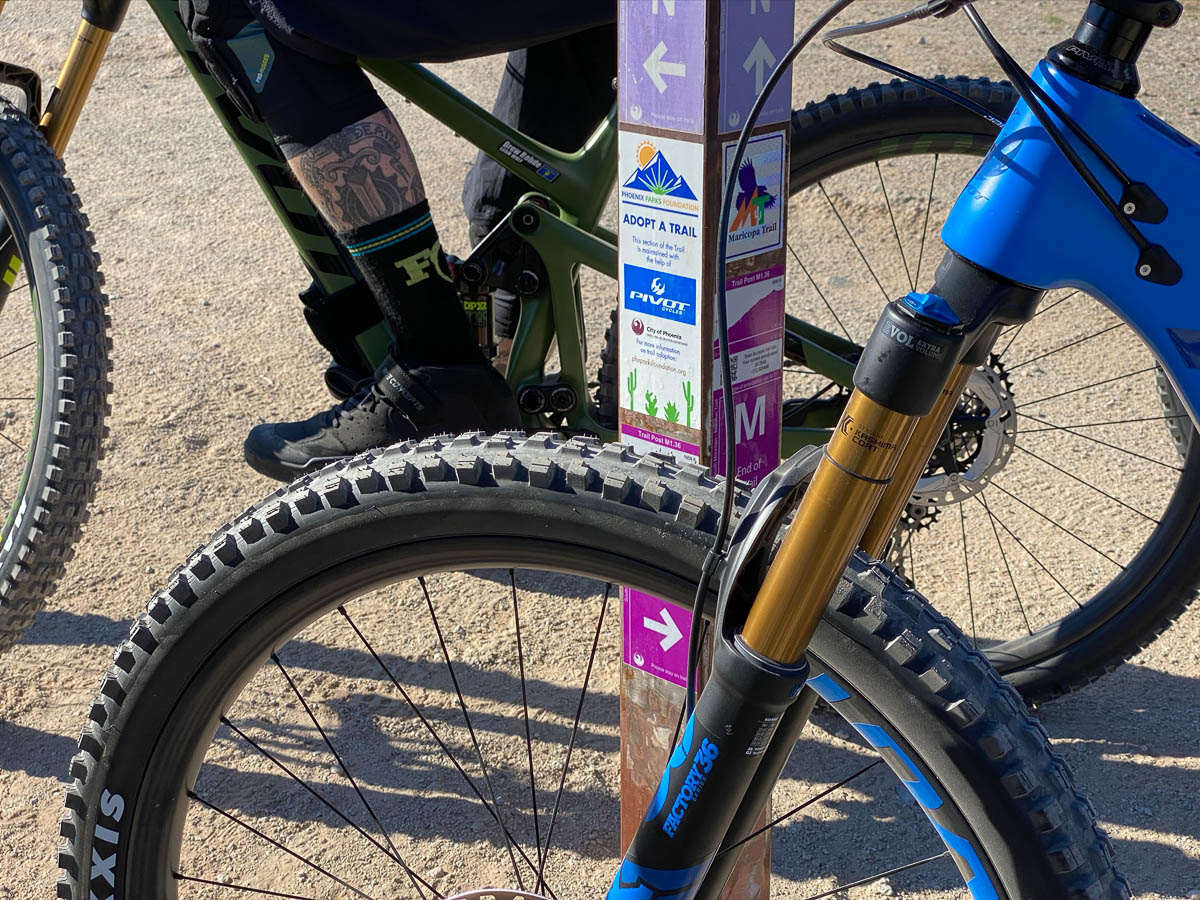
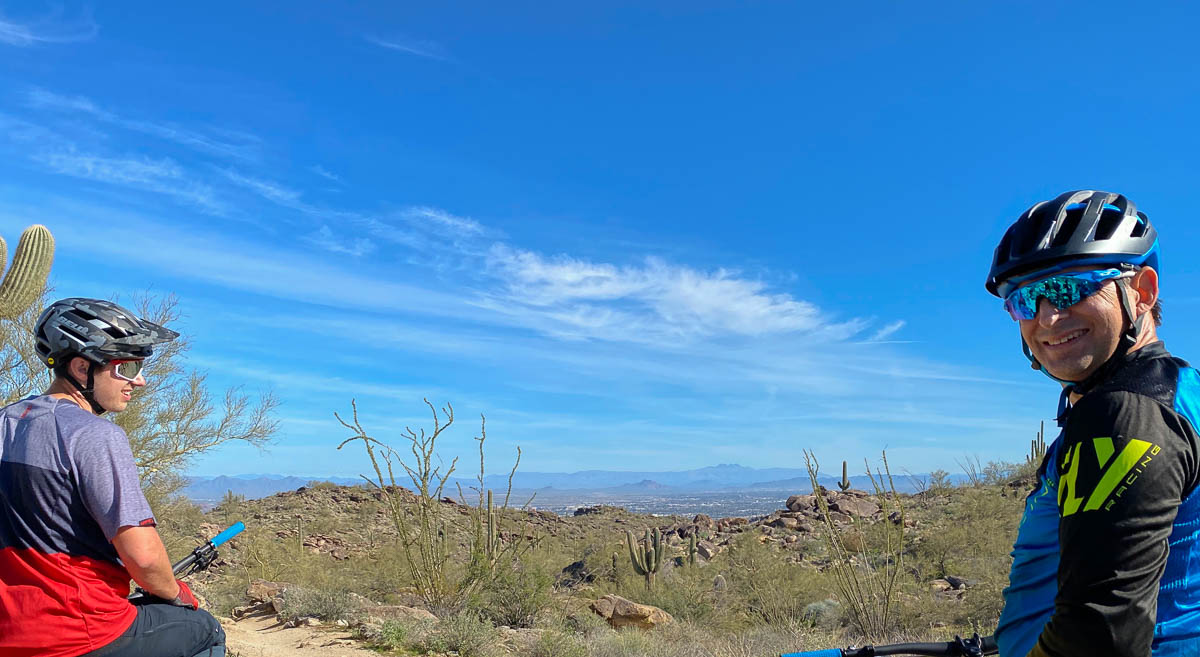
Where day one was a self-propelled loop that was at least half climbing, day two had us taking a shuttle to Dobbin’s Overlook. From there, we blasted down National Trail instead of climbing up it. Desert flow is often hard to find, but National Trail does it very well. But as soon as you would get comfortable cruising down the trail and skipping over rocks, National throws you a curve ball with some crazy feature like the Waterfall which is really only rideable by the best – or those willing to risk serious injury. This was not the trip for me to be attempting it, but several of our crew made it look fairly easy.
Clearly, the Switchblade’s trail manners haven’t gotten rusty – they’ve only gotten sharper. Not only that, but the rest of the bike is better too. While the previous version of the bike had room for a bottle cage, clearance with a piggy back shock reservoir wasn’t that great. The new bike has loads of room thanks to the vertical shock. It even has room for an “unannounced but upcoming accessory” that will mount to the underside of the top tube if you’re not using Fox Live Valve (L & XL frames should be able to use both).
The frame also seems to be quieter thanks to the new chainstay protector and Pivot Cable Port System. This is one of those things that may seem unimportant, but after you’ve ridden a bike where you aren’t constantly listening to chainslap and cable rattle, it’s hard to go back.
Riders of all sizes will appreciate the dropper post accommodations which allow for both shorter and longer posts. The seat tube is shorter allowing for more clearance up top, but it’s also more of a straight shot below allowing for the longest dropper posts to be used. I was happily on a medium at 5’7″ with a 690mm saddle to BB measurement, and still had exposed seat post with a 150mm travel dropper.
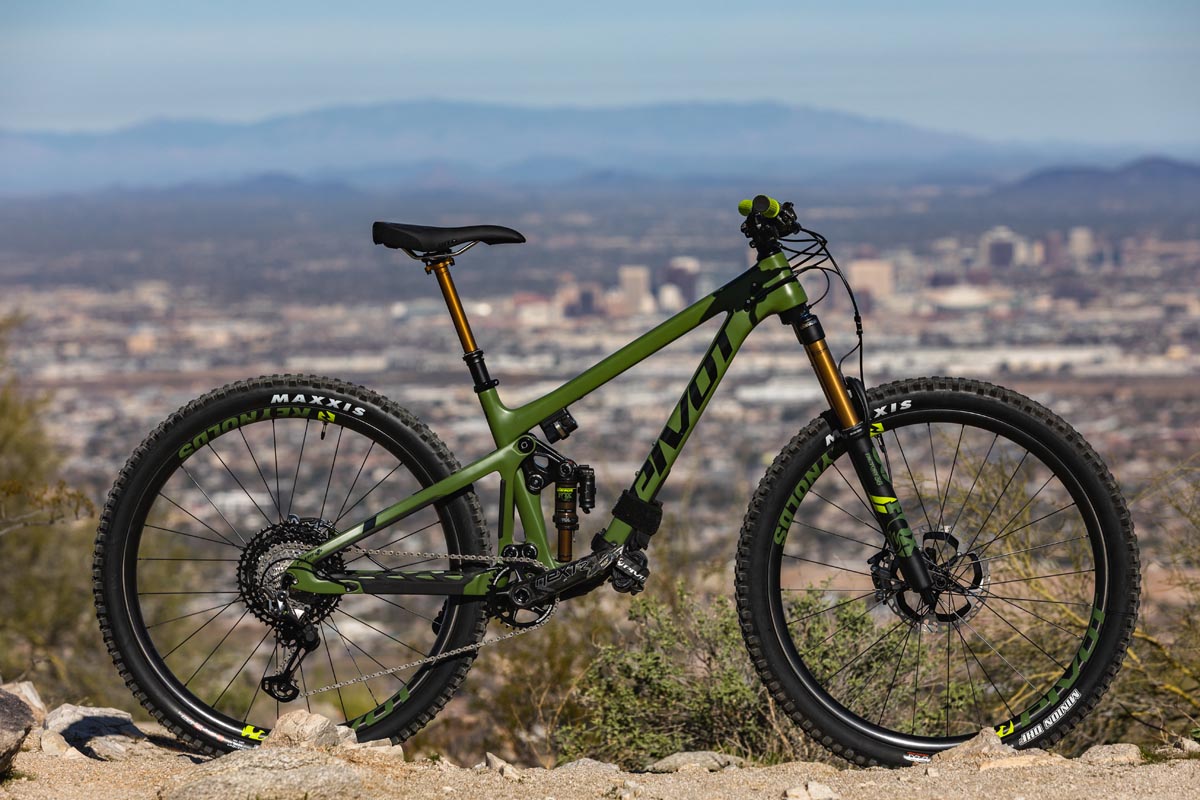
Goin’ Live
As a bit of a surprise, on the second ride I had the chance to swap my bike out for one that was equipped with Fox Live Valve. While Tyler has had a few opportunities to try out this system including on another Pivot, this was my first chance to give it a real test. Having ridden a few other electronically assisted suspension designs in the past, I thought I might have an idea of what was in store – but I was completely wrong.
In the parking lot before you get moving, a Live Valve bike feels a bit weird. Where you’re normally leaning on your bike and settling into the sag while waiting for your friends, a Live Valve bike doesn’t give. This is a bit disconcerting until you get out on the trail. All of a sudden, the suspension seems to adapt to the upcoming trail before you can even process what your front wheel is about to hit. It really is an impressive system that seems to work far better than you would expect.
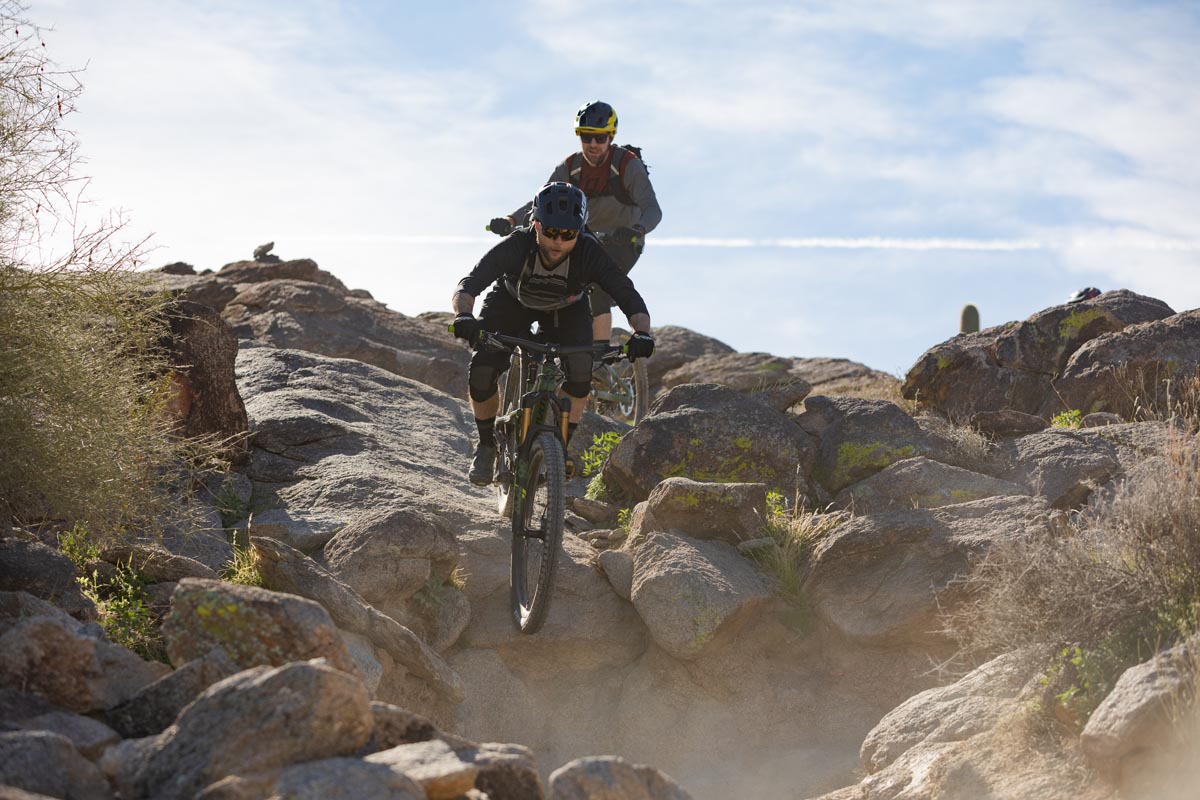
The only situation where I wasn’t quite sure about Live Valve was on a few surprise drops that I was completely unprepared for. On a single ride it’s very difficult to discern whether the suspension was doing something weird, or I just rode the section wrong so it would require more time on a Live equipped Switchblade to decide. But I do know that based on this ride I wouldn’t hesitate to recommend Fox Live Valve on shorter travel full suspension bikes where bigger drops aren’t as common. On something like an XC or Trail bike where lock outs are the norm, this system is so much more advanced. Truthfully, Pivots already pedal so well that Live Valve isn’t really needed, but if you’re all about the ultimate in pedaling efficiency, this could be for you.
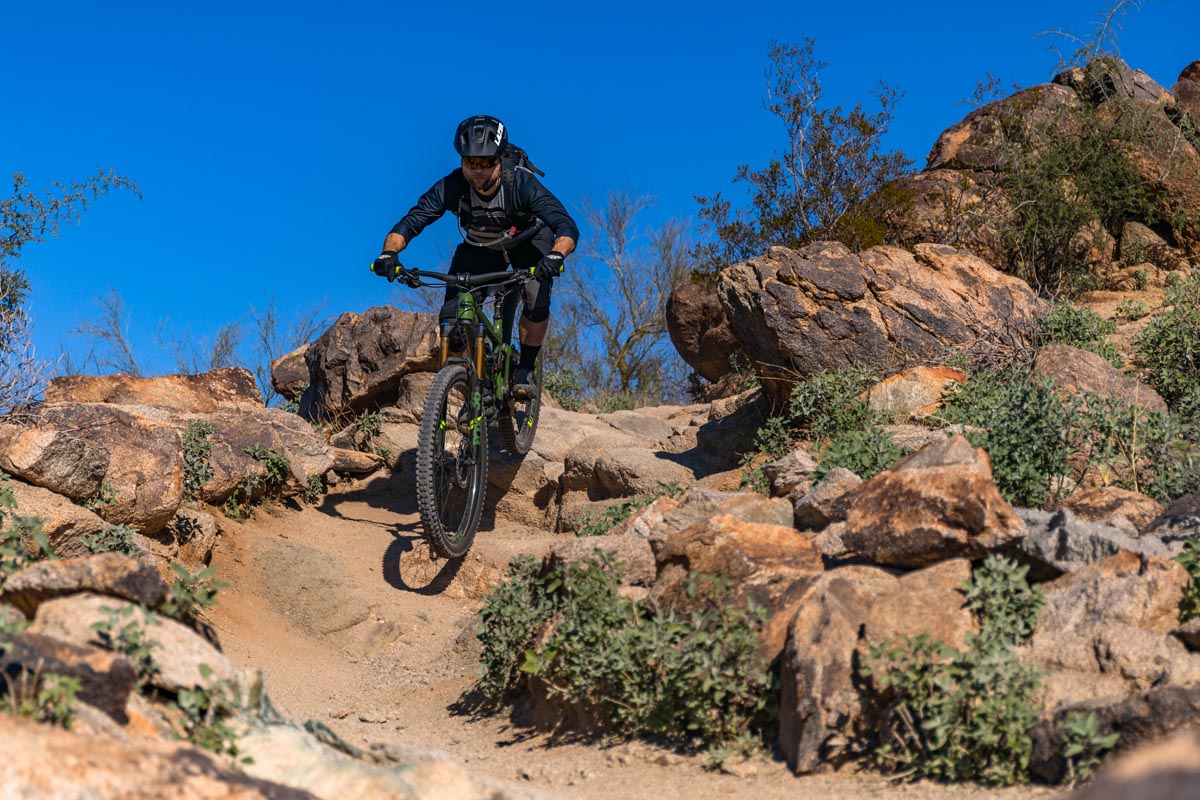
Overall, The new Switchblade delivers everything that has made Pivot bikes so successful over the years while simultaneously offering a fresh and exciting take on Pivot’s most popular model. The inspiration behind the Switchblade remains the same, but Pivot set out to create a bike that was more capable, offered better geometry, was more user friendly, and had the looks to bring it all together. Based on our first impressions, Pivot seems to have delivered.
